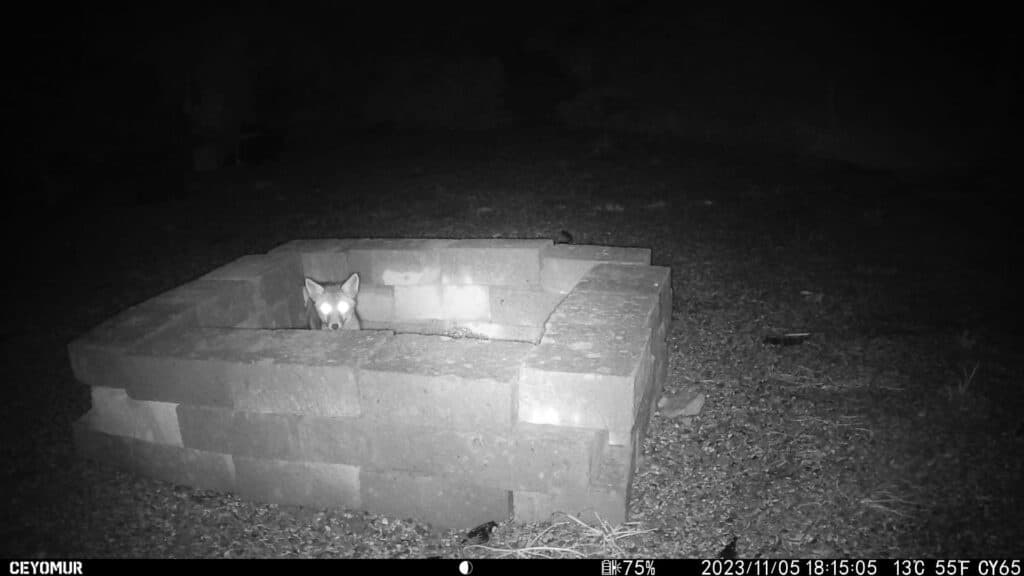In Italy, wild animals roam across unenclosed properties, often toppling poorly constructed fences, especially the chinghiale, or wild boar. So do the hunters, who can legally hunt on what someone might consider their own property.
Something was eating the persimmons off the tree. Curiosity got the best of me, and a wildlife camera solved the mystery. The main diner was a fox, but there was a porcupine and a hedgehog in the lineup, all of whom seemed content with the communal dining.
Around 400,000 years ago, the red fox began its worldwide migration, crossing glaciers, and before long, they had spread across most land except Australia. Italy was one of the early stops on their migration route. So why would I be concerned about the survival of a fox in Italy? Well, the hunters have really taken a hit on birds, and the farmers’ chemicals are wiping out insect populations, which kills even more birds and insects. Add in RoundUp and heaven only knows what else and you can see that there is a very negative impact on the beautiful Italian countryside.
The fox appeared a bit skinny, so when I ordered a nice steak dinner in Florence, I asked for a to-go package, and asked if they could include any bones and scraps they might have in the kitchen. They laughed when I explained it was for my fox, who was also fond of persimmons. This sparked amusing dinner conversation around the tables, and soon, everyone sent over their bones for my fox.
Thus, the prize was transported home by train, and the next day a couple of meaty bones were waiting in a bowl. These had disappeared by morning, and the following day, an even skinnier fox appeared in the afternoon. This was concerning. It was not just that the poor creature appeared to be starving, but that it came right up to the table with people having lunch on the patio and was fearless.
In Italy, there are hunters. Those hunters come right on the property, usually after chinghiale, the local wild boar. There is a fresh water spring and old Etruscan tombs to hide in.
So now we had a dilemma, feed this skinny fox and risk increasing its odds of getting shot by the hunters, and also throwing it off a serious foraging habit, or adopting a strict hardline approach. We settled on a compromise to give it a few bones every other day, and to leave out fresh water.
The first day the bowl was empty, and something got into the garden, tore up heavy plastic bags and spread hazelnut husks everywhere. We repositioned the camera to identify the culprit and captured plenty of footage of our fox, cheerfully diving into the bag and spreading the mess everywhere. Our fox was quite the little rascal, evidently enjoying the activity.
Cleaning up after him was not a task we relished. Thus, we fashioned a large sandbox from tuffo stone blocks, filling it halfway with hazelnut husks. By the next morning, the camera footage seemed to show the fox’s endorsement of our handiwork. He posed for the camera cheerfully, his eyes bright and ears perked, facing directly into the lens.
This is how we found ourselves adopting a fox, and why I now find myself shopping for fox toys that can stash a small biscuit. It’s still a toss-up as to who is training whom, or who finds more joy in our new dynamic.
The post Building Harmony with Italy’s Foxy Wildlife appeared first on Harmony.



